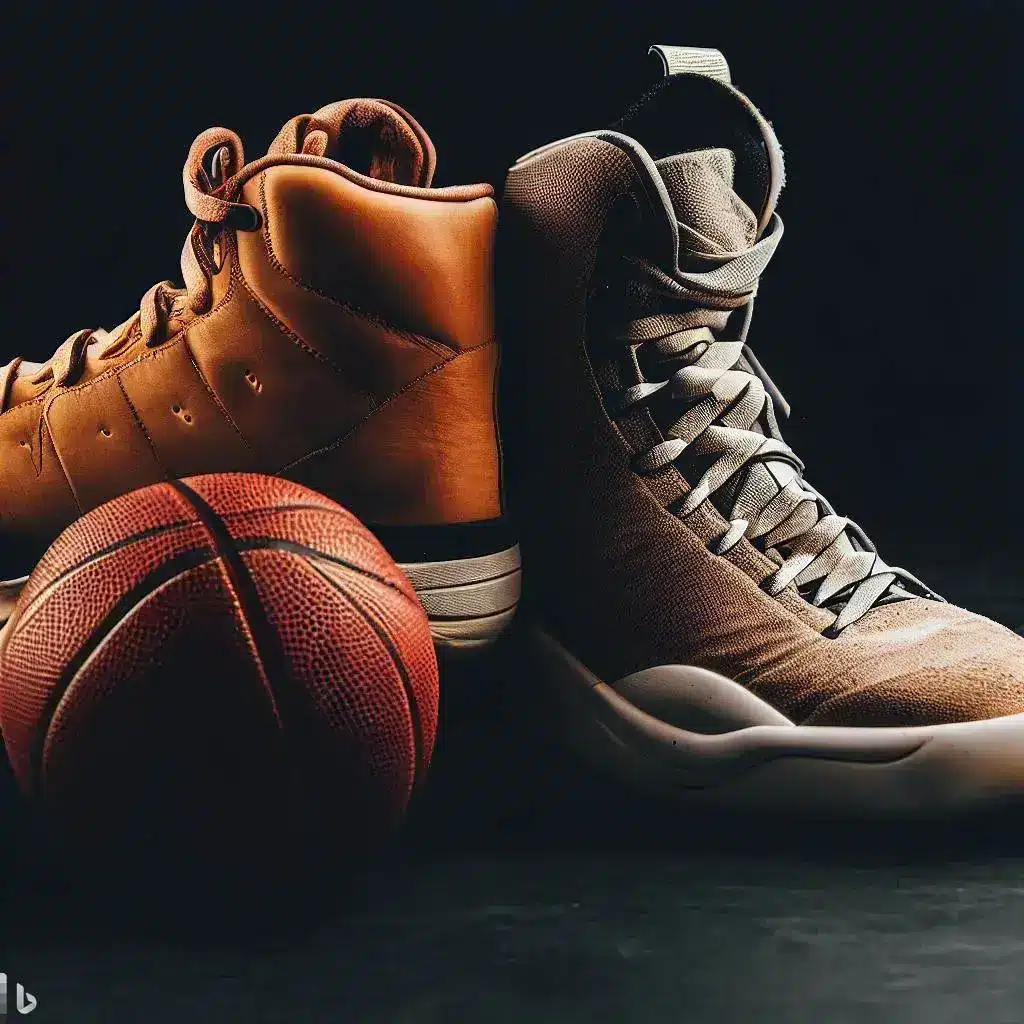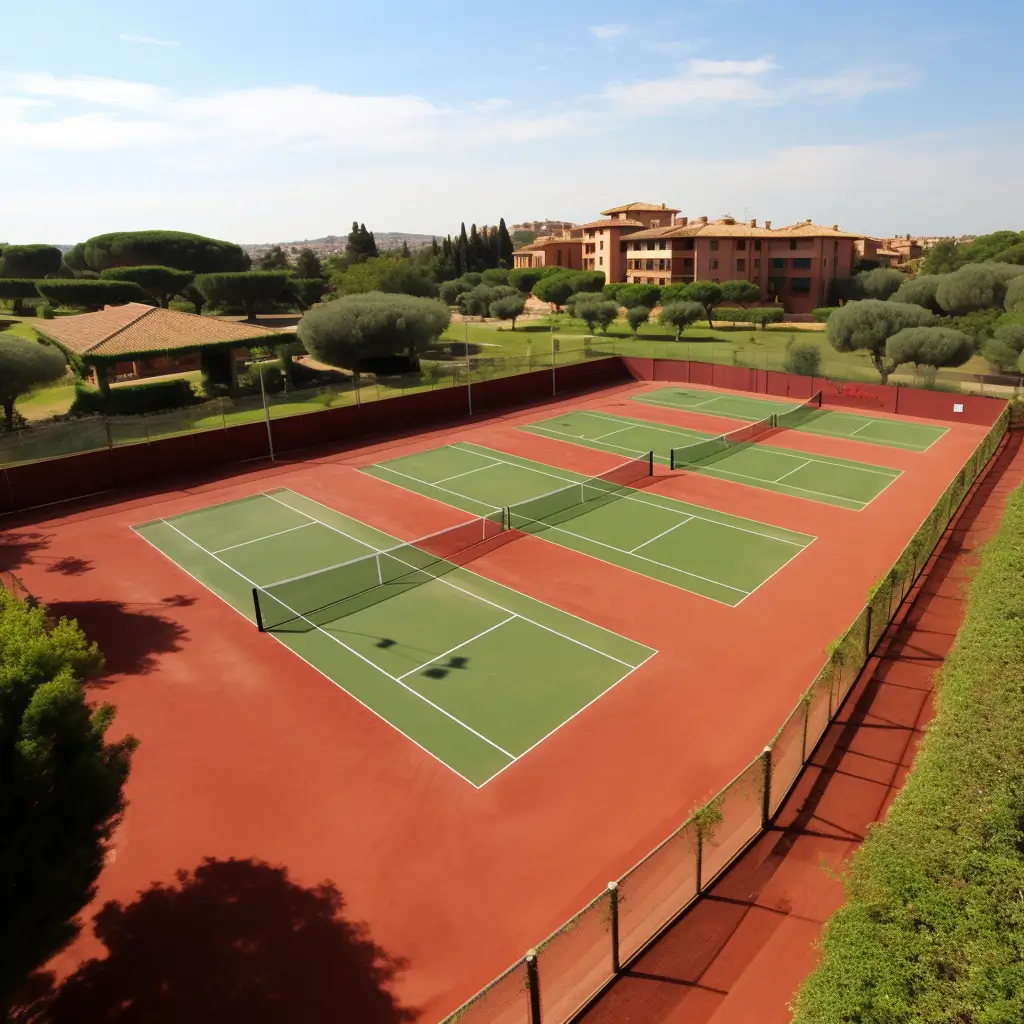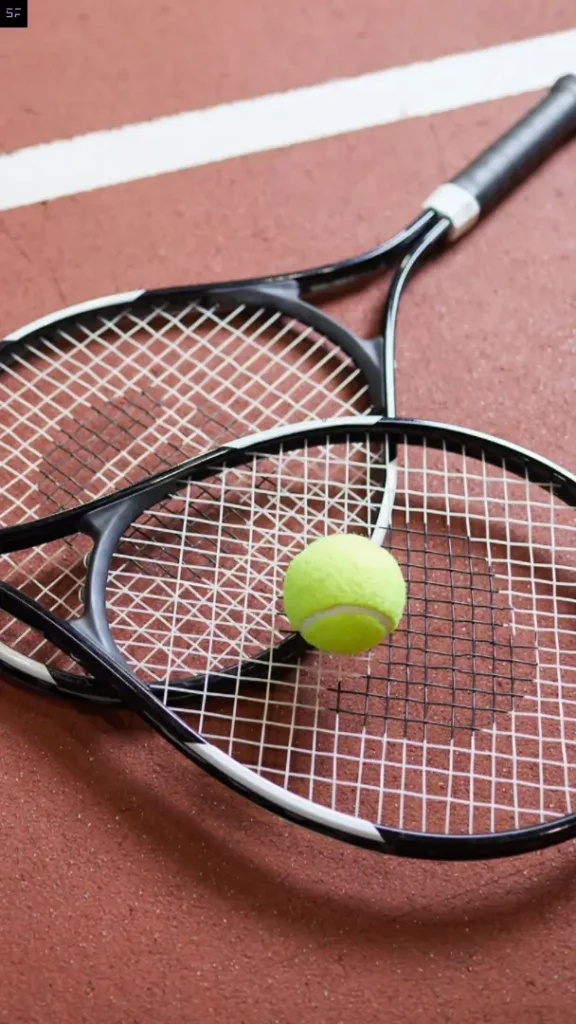Key Takeaways:
- Design Differences: Basketball shoes are built for jump impact; tennis shoes prioritize lateral movement.
- Injury Risk: Using basketball shoes for tennis can lead to injuries due to inadequate lateral support.
- Court Traction: Different tennis court surfaces require specialized shoe traction, which basketball shoes may not provide.
- Performance Concerns: Basketball shoes can limit agility in tennis, affecting gameplay and causing joint strain.
- Sport-Specific Designs: Tennis shoes differ from both basketball and running shoes, emphasizing the need for sport-appropriate footwear.
- Choosing the Right Shoe: It’s crucial to select tennis-specific shoes for optimal performance and injury prevention.
Are basketball shoes good for tennis? It’s a question that’s sparked some fiery debates among sports enthusiasts.
This article delves into this intriguing topic, providing an in-depth comparison of the two types of shoes, the pros and cons of using basketball shoes for tennis, how this choice might impact your performance, and the risk of injury.
Let’s dive into this guide!
Related Post: How Are Tennis Shoes Different?
Table of Contents
Are Basketball Shoes Suitable for Tennis?
Similarities and Differences
When comparing basketball shoes and tennis shoes, you’ll notice some similarities and differences.
For instance, both types of footwear are designed to provide support, stability, and traction. However, they are specifically engineered for the distinct demands of each sport.
Basketball shoes typically feature thicker soles and more cushioning, as they are designed to handle the impact of jumping and hard landings on the court.
On the other hand, tennis shoes have flatter soles with more traction, as lateral movements and quick changes in direction are essential during a match.
Read more about the similarities and differences between both shoes
Pros and Cons
Using basketball shoes for tennis comes with its pros and cons. Here are some aspects to consider:
Pros:
- Save money: Re-purposing your basketball shoes for tennis could potentially save you from buying a separate pair of tennis shoes.
- Landing relief: Basketball shoes provide more cushioning, which can be beneficial for absorbing impacts after jumping.
Cons:
- Limited lateral support: Basketball shoes are not designed for side-to-side movements, which are crucial in tennis.
- Less durable soles: Tennis shoes often offer more durable soles, especially in high-end brands. This durability will likely outlast the sole of a basketball shoe on a tennis court.
Please note that using basketball shoes for tennis is not recommended, as their design is tailored to the specific requirements of basketball rather than tennis.
It’s essential to invest in proper tennis shoes to avoid potential injuries and enhance your performance on the court.
Remember, your footwear plays a significant role in your overall experience and success in any sport.
So, choosing the right shoes for the game you’re playing will ultimately help you achieve better results and stay safe while doing so.
Related Posts:
How Should Basketball Shoes Fit
Tennis Shoes VS. Basketball Shoes: Cushioning and Support
Impact on Performance
When considering whether basketball shoes are good for tennis, it’s essential to look at cushioning and support.
In basketball, shoes are designed with extra cushioning to absorb the impact from frequent jumps and landings.
On the other hand, tennis shoes are built for lateral movements and quick stops and starts, which can make the extra cushioning in basketball shoes feel uncomfortable.
Ultimately, this will affect your performance on the tennis court.
Injury Prevention
Another critical aspect to consider is ankle support and its role in injury prevention. Basketball shoes are typically high-tops, providing more ankle support than traditional tennis shoes.
While ankle support is beneficial in basketball, tennis requires more lateral movement, making the additional support less critical.
Ankle injuries are a common concern in both basketball and tennis. However, basketball shoe design may not be the best option for tennis players.
As mentioned earlier, basketball shoes are not designed for the lateral movements required in tennis. Using them for tennis might lead to sprained ankles or torn ligaments, tendons, and muscles, even for experienced players.
When choosing a shoe for tennis, consider the following features that can help prevent injuries and provide appropriate support:
- Durable outsoles: Tennis shoes should have thicker, more durable outsoles to withstand the court’s harsh surface.
- Lateral support: Tennis shoes are designed with lateral support in mind since side-to-side movement is more common in tennis than in basketball.
- Proper fit: Ensure the shoe fits snugly and securely to prevent unnecessary pressure on your feet and ankle.

Tennis Court Surfaces and Shoe Traction
Types of Court Surfaces
Different sports require specific court surfaces to enhance performance and minimize the risk of injuries.
For tennis, there are three main types of court surfaces:
2. Grass courts: As the name suggests, these courts are covered in grass. They are the fastest playing surfaces, and the ball tends to stay lower. However, grass courts require constant maintenance and can get slippery when wet.
3. Hard courts: These courts typically consist of cement, asphalt, or acrylic materials. Hard courts offer a medium pace, making them suitable for different playing styles, and they are widely used for various tennis tournaments. But, hard courts can also be rougher on your joints.

Tread Patterns
The tread pattern of your shoes plays a crucial role in determining your traction on different court surfaces.
For instance, tennis shoes can cope with some rain, but a wet court can severely reduce the traction of basketball shoes.
Tennis shoes are specifically designed with varying tread patterns to adapt to different court surfaces, ensuring optimal performance.
On the other hand, basketball shoes are designed with a herringbone pattern that provides traction for explosive sprints and sudden stops, perfect for hardwood or PU surface-coated basketball courts.
Unfortunately, these tread patterns are suboptimal for the different tennis court surfaces.
Using basketball shoes on a tennis court could compromise your game by affecting your ability to accelerate and decelerate, as well as your overall stability on the court.
Therefore, it is essential to consider the court surfaces and traction needs when selecting the right shoes for tennis.
Basketball Shoes VS. Tennis Shoes: Movement and Stability
Side-to-Side and Lateral Motion
When playing tennis, you’ll notice that lateral movements and quick side-to-side motions are crucial for keeping up with the fast-paced gameplay.
Basketball shoes aren’t good for tennis, as they don’t offer the necessary support for these types of movements.
Tennis shoes, on the other hand, are specifically designed to handle lateral movements, helping to prevent unnecessary stress on your knees and ankles.
To improve your agility on the court, focus on having the proper footwear that enables you to move seamlessly and quickly.
With a good pair of tennis shoes, you can enhance your footwork and lateral moves, giving you an edge during intense matches.
Jumping and Running
While both basketball and tennis involve a lot of running and jumping, the way you execute these motions differs in each sport.
Basketball shoes are designed for forward movement and stopping abruptly. However, tennis requires sudden changes in direction and quick acceleration.
Tennis shoes are lighter than basketball shoes, allowing for greater speed and reflexes during play.
This lightweight design is essential when covering the court efficiently and maintaining momentum during the game.
It’s important to remember that wearing basketball shoes while playing tennis can limit your movement and put extra strain on your joints.
By choosing the appropriate footwear for tennis, you can ensure that your performance on the court is optimized and that you are minimizing the risk of injury.

Tennis and Basketball Shoes: Design and Features
Upper Materials and Construction
The materials used for the upper part of basketball and tennis shoes can greatly affect their suitability for each sport.
While both types of shoes can come in various materials such as leather or synthetic materials, you’ll notice that basketball shoes typically have higher ankles for better protection and support.
On the other hand, tennis shoes tend to have a lighter construction, often using mesh materials, which enhances breathability and flexibility.
Midsole and Outsole Technology
The midsole is responsible for providing cushioning and shock absorption, while the outsole offers traction and stability.
In basketball shoes, you’ll find that the midsole is typically thicker, designed to handle the impact of jumping and sudden movements.
It may also come with specific cushioning technologies, like Nike’s Zoom Air.
Tennis shoes, on the other hand, focus more on lateral support since the sport involves many quick side-to-side movements.
The outsole of tennis shoes usually features durable material and a specific tread pattern appropriate for the court surface, whether it be hard, clay, or grass.
Fit and Comfort
The fit and comfort of both basketball and tennis shoes differ in several aspects:
- Ankle support: Basketball shoes often come in high-top or mid-top designs to offer better ankle support, whereas low-top tennis shoes prioritize freedom of movement.
- Toe box: Tennis shoes tend to have a wider toe box, allowing your toes to spread out, which improves comfort during lateral movement.
- Tongue and collar: Both sneakers may have a padded tongue and collar for added comfort, but basketball shoes may offer extra padding to handle the impact from jumps.
To sum it up, basketball shoes generally prioritize protection and support due to the nature of the sport, while tennis shoes focus on flexibility and performance on the court.
Related Post: 5 Best Basketball Shoes For Knee Pain
Tennis Shoe Comparison with Other Athletic Shoes
In this section, we will compare tennis shoes with other types of athletic shoes. We’ll discuss the differences and similarities between tennis shoes and running shoes, as well as tennis shoes and volleyball shoes.
Tennis Shoes Versus Running Shoes
| Tennis Shoes | Running Shoes | |
|---|---|---|
| Design Purpose | Designed for the demands of tennis | Designed primarily for forward movement |
| Lateral Support | Provides strong support for lateral movements | Not designed specifically for lateral movements |
| Directional Changes | Supports quick changes in direction | Not designed for quick changes in direction |
| Sole | Flatter sole for better grip | More flexible sole, higher heel-to-toe drop |
| Base Stability | Offers a more stable base | Not designed specifically for stability |
| Construction Weight | Often heavier and sturdier | Typically lighter and designed for constant impacts |
| Durability | More durable outsole | May not have as durable an outsole |
| Interchangeability with other sports | Not ideal for running due to different design focus | Not ideal for sports requiring lateral movements and quick directional changes |
Read more on the differences between running and tennis shoes
Tennis Shoes VS. Volleyball Shoes
| Tennis Shoes | Volleyball Shoes | |
|---|---|---|
| Design Purpose | Designed for the demands of tennis | Designed specifically for the demands of volleyball |
| Lateral Support | Provides support for lateral movements | Provides support for lateral movements |
| Sudden Directional Changes | Supports sudden directional changes | Supports sudden directional changes |
| Midsole | Standard midsole | Higher midsole to support frequent jumping |
| Construction Weight | Could be heavier depending on the model | Typically lighter to promote agility |
| Sole | Flatter sole | Flatter sole |
| Suitability for other sports | Not suitable for sports like basketball due to lack of arch and ankle support | Not suitable for sports like basketball due to lack of arch and ankle support |
Check out these 9 Best Basketball Shoes For Volleyball
Choosing the Right Shoes for You
Considerations for Individual Needs
When selecting the perfect pair of shoes for playing tennis, remember to consider factors like comfort, price, arch support, and injury prevention.
It’s crucial to find a shoe that fits your foot shape and allows for quick movements on the court.
Lightweight shoes can help enhance your speed, but make sure they still provide ample support for your knees and ankles.
Additionally, consider the grip and durability of the shoe, especially if you frequently play on abrasive surfaces.
Finding a shoe with a comfortable insole and proper arch support can help prevent injuries and improve your overall performance.
Expensive shoes aren’t always the best option, as you can find some great options at more affordable price points. Just make sure they meet your needs!
Recommended Brands and Models
Several brands and models of shoes can cater to your needs while playing tennis.
Here are the most popular ones:
- Nike Air Jordan One Take 4: This low-top shoe is a top choice and features a herringbone, and multi-surface traction pattern for a reliable and strong grip on any court surface.
- Adidas: Known for their stylish and functional shoes, Adidas also offers tennis-specific models that provide excellent grip and support.
- Asics: Asics tennis shoes offer a great balance of speed and support, making them popular among players with different preferences and playing styles.
Don’t hesitate to try on multiple pairs of shoes before making your final decision.
Remember, finding the right shoes for you is crucial to enhancing your game and preventing injuries on the tennis court.
Conclusion
In the end, the answer to Are basketball shoes good for tennis? seems to lean towards a no. While you can certainly play a casual game of tennis wearing basketball shoes, they might not be the best choice for regular play.
You’d likely be compromising on comfort, performance, and potentially even safety.
Remember, shoes are an essential piece of sporting equipment, not just a fashion statement.
So, lace up the right pair, and you’re one step closer to acing that match!
FAQs
Why do tennis players wear basketball shoes?
Some tennis players may wear basketball shoes for their extra cushioning and ankle support. However, they’re not ideal due to limited lateral support.
What shoes can be used for tennis?
Tennis shoes are specifically designed for the sport, with a focus on lateral support, grip, and flexibility to handle quick side-to-side movements.
Can sports shoes be used for tennis?
While some sports shoes may be used, it’s best to use tennis-specific shoes for optimal performance and injury prevention on the court.
Do shoes matter in tennis?
Absolutely. The right shoes provide necessary support, stability, and grip, aiding in quick movements, preventing injuries, and enhancing overall performance.
Can I wear Jordans for tennis?
Jordans are designed for basketball, not tennis. They lack the necessary lateral support and sole durability needed in tennis.
